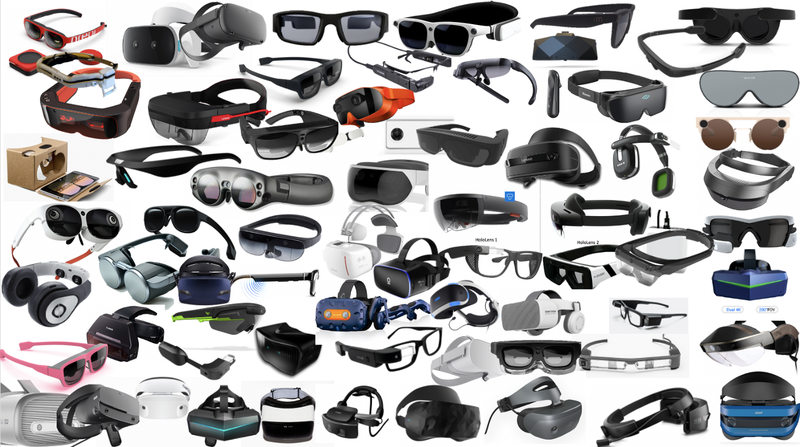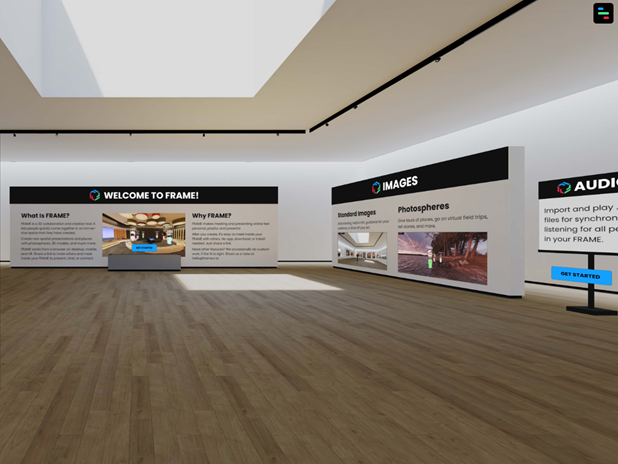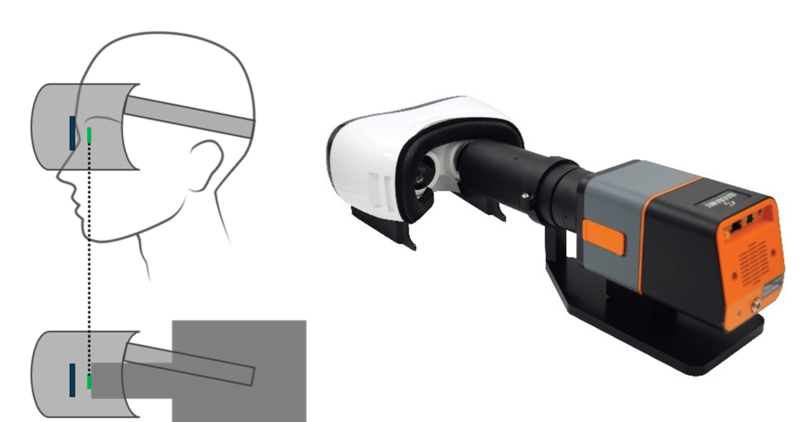To Infinity and Beyond: Extended Reality Surges Ahead
The last two years have pushed AR/VR technologies into the limelight and accelerated adoption much faster than previously anticipated. Suddenly, remote learning platforms were a necessity, online retail tools became more than a novelty, virtual meetings were the norm, and home-bound populations took to VR systems and applications to provide virtual versions of the entertainment, experiences, and travel they were missing in real life.
As a result, multiple sectors of the extended reality (XR) industry have leapfrogged ahead. Revenues for AR devices grew 38.1% and for VR grew 27.1% in 2020,1 and shipments of AR/VR devices doubled from 5.5 million units in 2020 to 11 million in 2021.2 The XR market is forecast to continue this fast pace, growing at a CAGR of 35% and expanding by $125 billion by 2024.3
Product and application developments that might have taken several more years of organic evolution are here now, and all predictions point to an increasingly XR world in the future. In this post, we spotlight some XR trends expected to keep industry momentum going strong in 2022...and beyond.
Devices Are Multiplying
The number and variety of XR devices available on the market keeps growing as the major brands expand their product lines and new companies join the fray. One industry consultant recently collected a list of more than 85 companies offering more than 220 different headset models.4
As the quantity and types of headsets, goggles, smart glasses, and other near-eye displays (NEDs) proliferate, customers benefit from more headset choices—including more affordable options. As we’ve seen with many other device categories such as laptops and smartphones, early entrants were relatively expensive. But over time the landscape expanded to include both high-end/high-performance models and entry-level and more basic offerings.

A selection of just a few of the 220+ XR devices made by 85+ different manufacturers, as of November 2021. (Image Source)
Culture Shift
Remote work is here to stay for many office and information workers as part of either a hybrid or full-time model. Similarly, many former “road warriors” have learned that virtual presentations can sometimes be an effective substitute for meetings that previously would have incurred the cost of a flight and hotel. In many cases, virtual platforms can provide the collaboration space, facetime, and connection that helps keep teams working in tandem and avoid isolation.

FRAME is a VR remote meeting and presentation platform that’s easy to use and customize even if you’re not an application developer. (Image © FRAME)
XR in Healthcare
The medical and healthcare sector has been called a “Petri dish” for AR/VR applications as clinicians and patients alike have experienced the benefits of these technologies and continue to explore new ways to use them. For example, many people experienced their first telehealth (virtual/video) doctor’s visit during the pandemic. Utilization of this outpatient option spiked initially in April 2020 and has now stabilized at a rate 38X higher than before the pandemic.5
On the patient side, XR is being used to help improve fitness via real-time remote tracking and monitoring. It’s also a beneficial tool for providing care and support to patients after a medical procedure once they are at home. AR/VR has proven its effectiveness for training medical students, allowing doctors to “see” inside a patient virtually, and helping surgeons to plan and practice before they perform a procedure on the live patient. With these and many other use cases, the AR/VR healthcare market is growing at a CAGR of 32.33% through 2027.6

Using AR glasses in the operating room to visualize patient physiology. (Image Source)
Shop Till You Drop
Retailers saw an explosion in online sales during the pandemic as consumers enjoyed the safety and convenience of shopping from home. But online retailers, especially those in the clothing industry, have traditionally dealt with a high percentage of product returns once shoppers have a chance to see their purchase in real life and discover it’s not what they expected or doesn’t fit. Some online customers also miss the social aspect of shopping that they enjoyed pre-pandemic, getting friends’ opinions to help make a purchase decision.
New AR shopping applications integrated with social media are helping to mitigate these issues, leading industry analysts to predict a 47.1% CAGR in AR retail to 2027.7 These applications allow shoppers to envision items in 3D and view them in a more realistic context. For example, home furnishings giant IKEA has had a successful AR application for several years that enables customers to preview product images integrated with their home environment.
For online clothing retailers, AR shopping is a boon as customers can do a virtual try-on before buying. One AR shopping application developer has found that customer conversions increase by 30% and returns decrease by up to 50%8 when shoppers can customize an avatar to match their unique shape and size, visualize how clothing items will look and fit, and share with friends on Snapchat and Instagram.
A 3D virtual fitting room application from Style.me lets users customize an avatar’s body size and shape to “try on” fashions before buying online.
Ensuring Quality of XR Devices
As the quantity and variety of headsets, goggles, smart glasses, and other NEDs proliferate, device designers and manufacturers must keep evolving product quality testing methods to keep pace. New optical structures, display technologies, and hardware designs require new measurement and inspection approaches to ensure that devices deliver the intended user experience.
Radiant was the first company to commercially release an AR/VR display imaging metrology solution to feature a lens design with optical entrance pupil (aperture) at the front. This design allows the test system to be positioned within a headset to replicate the near-eye pupil position of the human eye. Applying wide-field-of-view (WFOV) optics, the AR/VR Lens solution can image the entire immersive display field of view (FOV) to evaluate all visual qualities as viewed from the user’s perspective.

The entrance pupil of Radiant’s AR/VR Lens matches the size and position of the human pupil in a headset (left). The AR/VR Lens (right).
As new NED designs and optical structures continue to emerge, we have continued to evolve our XR measurement and testing solutions to meet the needs of XR developers and manufacturers. Learn more about AR/VR/MR device quality and testing considerations and get a look at Radiant’s newest solutions for XR measurement in this recent interview published by AZO Optics: Understanding Novel Methods for XR Optical Testing.
In it, Davis Bowling, Radiant’s North America Sales Manager, discusses common performance issues specific to each component of an XR device, novel optical test methods, and Radiant's portfolio of measurement solutions that provide critical data for quality control at each stage of XR design and manufacture.

CITATIONS
- Virtual Reality (VR) Market – Growth, Trends, COVI19 Impact and Forecasts, Yahoo! Finance, November 18, 2021.
- “74 Virtual Reality Statistics You Must Know in 2021/2022: Adoption, Usage and Market Share.” FinancesOnline, quoting Statista. (Retrieved March 16, 2020)
- “$125 Billion Growth in Global Augmented Reality (AR) and Virtual Reality (VR) Market 2020-2024 | APAC to Emerge as Major Market.” Bloomberg Business, February 2, 2021.
- Singh, K., “The Growing List of XR Devices.” Medium, May 30, 2020, updated November 2021.
- Bestsennyy, O., et al., “Telehealth: A quarter-trillion-dollar post-COVID-19 reality?” McKinsey.com, July 9, 2021. (Retrieved March 16, 2022)
- “Global AR & VR in Healthcare Market Size to Grow USD 9.02 Bn By 2027.” Medgadget, March 14, 2022.
- Augmented Shopping Market Size, Share & Trends Analysis Report…Forecasts, 2020 – 2027, Grand View Research, September 2020.
- Virtual Fitting and Styling Solution for E-Commerce, Style.me. (Retrieved March 17, 2022)
Join Mailing List
Stay up to date on our latest products, blog content, and events.
Join our Mailing List
